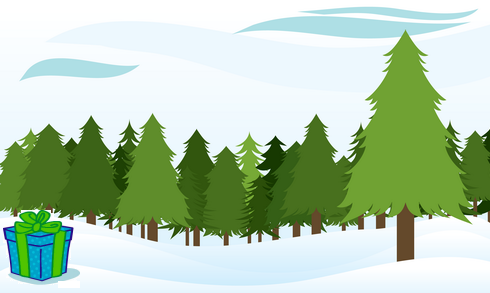by Jim Freed, WSU Extension Forester
One of the great benefits of having forestland is being able to provide special gifts for your friends and family. It may be too late for some of these gifts this year, but as you spend time in your forest throughout the next year you will have your eyes open to great gift possibilities.
Wreath kits – Plan the pruning of your Douglas fir, white pine, western red cedar, noble fir, and grand fir for the time after the trees have experienced a hard frost. Cut the removed limbs into 18 to 24 inch long boughs with healthy needles and stems. Collect a mix of fresh clean cones from pines, spruce, and Douglas fir. Harvest some stems from red osier dogwood or yellow stems of willow. Select enough materials to make a 24” wreath. Pack them into a box with instructions on how to make a natural wreath and ship them to your friends and family. You can include a metal wreath ring or flexible branches from vine maple to make the wreath base more natural and biodegradable.
Christmas trees – These can be trees that are planted just to produce Christmas trees or can be selected as part of a thinning project. Check out trees that have been naturally reseeded and grown for good tops. Often the top 3 to 6 feet of larger trees that need thinned will make a great Christmas tree. Additionally they are all natural, wild, and sustainable trees which make them a great gift for anyone on your list!
Wild bird seed kits – Collect wild berries, nuts, and seeds during the harvest season. Rose hips, conifer seeds, salal berries, evergreen huckleberries, acorns, hazelnuts, grass seeds, maple seeds, raspberries and blackberries are all great. Select the ones that are not of the quality you want to keep for yourself. The birds do not care if they are pretty just that they are available when they need some. The real advantage of these kits is that the seeds will be spread around by the birds. This will help you establish native trees, shrubs, and grasses in other areas of your land avoiding introducing non-native plants.
Native plants – Salvage some of your seedling trees or shrubs you are going to be removing as part of your thinning project. The native plant society of Washington State has developed guidelines for salvaging native plants. They can be found by clicking here. Salvaged plants, if done correctly, provide a great source of plants that can be used for reforestation projects or even native plant landscaping.
As you harvest plants or plant products for gifts, take a little time to make sure you take pictures or a video of you and your family collecting and preparing the gifts. It will make the gifts even more valuable to the recipient.
